Attenti DCU-2010-2 Data Collection Unit User Manual E3 Landline Receiver and Transmitter
3M Electronic Monitoring, Inc. Data Collection Unit E3 Landline Receiver and Transmitter
Attenti >
User Manual
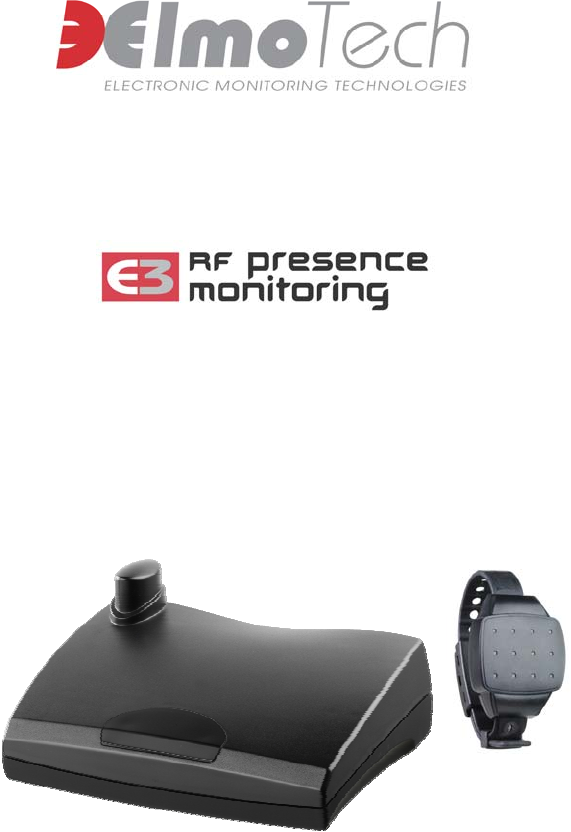
E3 Receiver Unit
Installation Guide

Information in this documentation is subject to change without
notice and does not represent a commitment on part of
Elmo-Tech Ltd. The software described in this document is
subject to the license agreement that is included with the
product, which specifies the permitted and prohibited uses of
the product. Any unauthorized duplication or use of this
documentation, in whole or in part, in print, or in any other
storage or retrieval system is prohibited.
No part of this publication may be reproduced, transmitted,
transcribed, stored in a retrieval system, or translated into any
language in any form by any means for any purpose other than
the purchaser’s personal use without the permission of
Elmo-Tech Ltd.
© 2002-08 Elmo-Tech Ltd. All rights reserved.
Unless otherwise noted, all names of companies, products,
street addresses, and persons contained herein are part of a
completely fictitious scenario and are designed solely to
document the use of an Elmo-Tech product.
Contact Us
Corporate Headquarters
Elmo-Tech Ltd.
2 Ha-Barzel St.,
P.O. Box 13236,
61132 Tel Aviv, Israel
Tel: 972-3-7671800
Fax: 972-3-7671801
U.S.A Customers, call 1-800-313-1483
E-mail: contact@elmotech.com
Visit us at: www.elmotech.com

Table of Contents
1 Introduction.................................................................... 1
2 The Monitor Center or Probation Agency......................... 3
Required Equipment.......................................................... 3
3 The Offender’s Curfew Location...................................... 5
E3 Receiver Unit Location................................................... 5
Installing the E3 Receiver Unit............................................ 6
4 Installing the Transmitter............................................... 9
Activating the Transmitter (Tx) ........................................... 9
Attaching the Transmitter .................................................10
5 Activating the E3 Receiver Unit..................................... 13
Downloading Curfew Schedules and Operational Parameters ..13
Performing a Range Test...................................................14
6 Daily Operating Instructions......................................... 17
Incoming Calls (E3 Landline Receiver Unit) ..........................17
Accepting an Incoming Call...........................................17
Outgoing Calls (E3 Landline Receiver Unit) ..........................18
Performing an Outgoing Call .........................................18
Incoming Calls (E3 Cellular Receiver Unit) ...........................19
Accepting an Incoming Call...........................................19
Outgoing Calls (E3 Cellular Receiver Unit) ...........................19
Performing an Outgoing Call .........................................20
i

E3 Landline Receiver Unit and Transmitter Installation Guide
General Rules for the Offender...........................................21
7 Removing the Monitoring System ................................. 23
Performing an End of Service.............................................23
Disconnecting and Packing the E3 Receiver Unit ...................24
Removing the Transmitter.................................................24
Deactivating the Transmitter .............................................25
8 Monitoring System Maintenance ................................... 27
Cleaning the E3 Receiver Unit............................................27
Cleaning the Transmitter...................................................28
Replacing the Transmitter Straps .......................................29
9 System Specifications ................................................... 33
Transmitter Specifications.................................................33
E3 Receiver Unit Mechanical/Electrical Characteristics...............33
10 FCC Information............................................................ 34
ii

1
1 Introduction
Welcome to the Electronic Monitoring System and correctional
tool, created by Elmo-Tech Ltd. that has the ability to collect,
analyze and intelligently act on information from multiple
sources.
An inconspicuous Transmitter (TX) is attached to the client's
ankle or wrist by means of a tamper-detecting strap. The
client's presence (or absence) is tracked constantly by radio
transmissions between the Transmitter and the E3 Receiver Unit
(DCU-2010 or DCU-2010C). When the client enters or leaves
the defined home environment, the E3 Receiver Unit records the
event. The E3 Receiver Unit then checks the client’s stored
curfew schedule to determine if the event is in violation of his or
her curfew order.
The E3 Receiver Unit reports certain violations to the Monitor
Center as soon as they occur. All violation, non-violation events
that are not defined as immediate are stored in the E3 Receiver
Unit for the next upload. The E3 Receiver Unit initiates a pre-
defined routine sanity call to the Monitor Center in order to
report the status of the equipment and upload stored events.
This event information completes the audit trail of the client’s
behavior.
The E3 Receiver Unit detects and reports tilting, loss of power,
loss of telephone line, low battery, and other alarm conditions.
The E3 Receiver Unit also detects Transmitter tampering,
Transmitter removal and low battery.
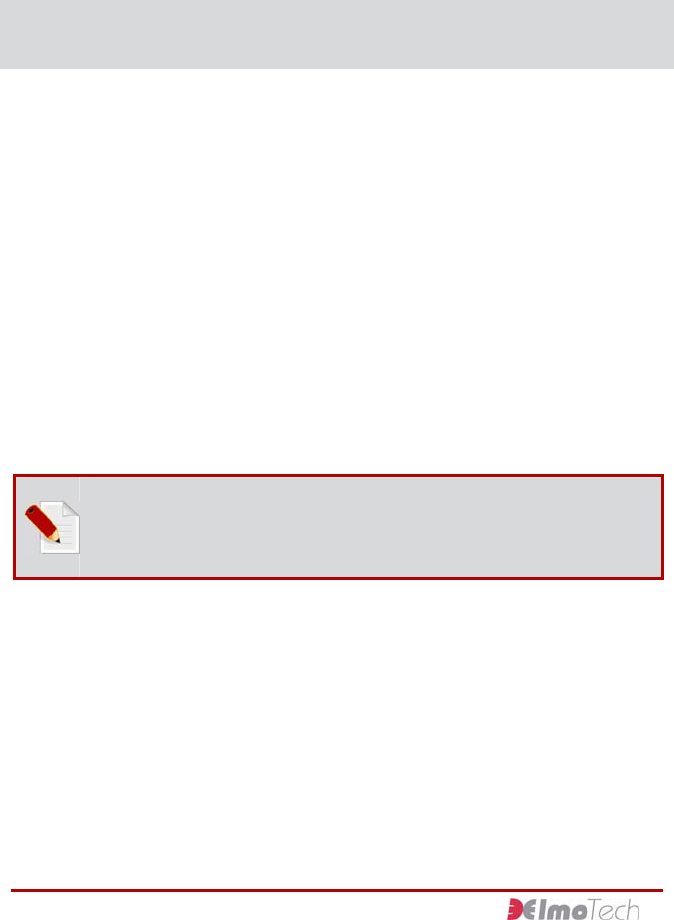
2 The Monitor Center or Probation Agency
At the monitor center or probation agency, perform the
following:
1. Enter the Offender’s personal information and E3 Receiver
Unit configuration parameters into the Electronic Monitoring
System software application. This can be done well in
advance, even before the actual monitoring equipment is
allocated and installed.
2. Enter the following equipment data into the Electronic
Monitoring System software application:
f E3 Receiver Unit serial number
f Transmitter serial number
3. Check that the serial numbers entered match the numbers
on each of the equipment items.
Note: Serial numbers are visible on the back or side of
each equipment item.
Required Equipment
Check that you have the following items of equipment before
you leave the monitor center or probation agency:
f E3 Receiver Unit and carrying case
f Power adapter - 12VDC, 1A (DCU-2010) or 2A (DCU-2010C)
f Telephone cables (DCU-2010 only)
f Transmitter with Strap holder
3

E3 Receiver Unit and Transmitter Installation Guide
4
f Electronic key
f Locking tool
f Locking clips (male and female)
f Screwdriver (to open the clips if necessary). It is
recommended to use a 0.2in (5mm) flat head screwdriver.
Note: It is always recommended to bring an extra set of
locking clips, in the event that the first set get accidentally
damaged during the installation.
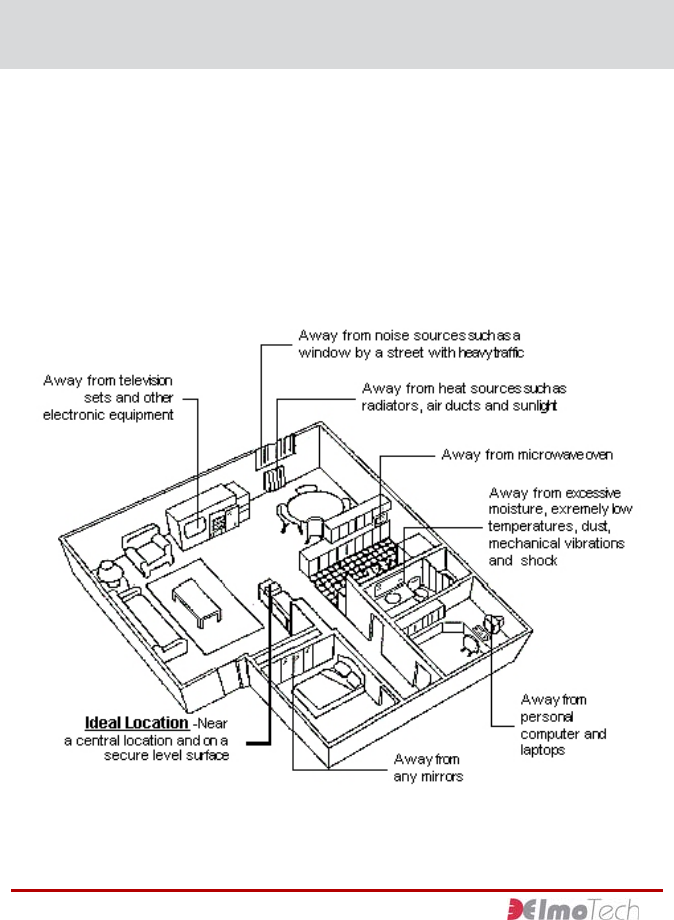
3 The Offender’s Curfew Location
In order for the Electronic Monitoring System to monitor the
Offender in the home environment effectively you will need to
find the best location for the E3 Receiver Unit.
E3 Receiver Unit Location
The following figure shows how to find the best location for the
E3 Receiver Unit.
Figure 1 Ideal E3 Receiver Unit Location
5
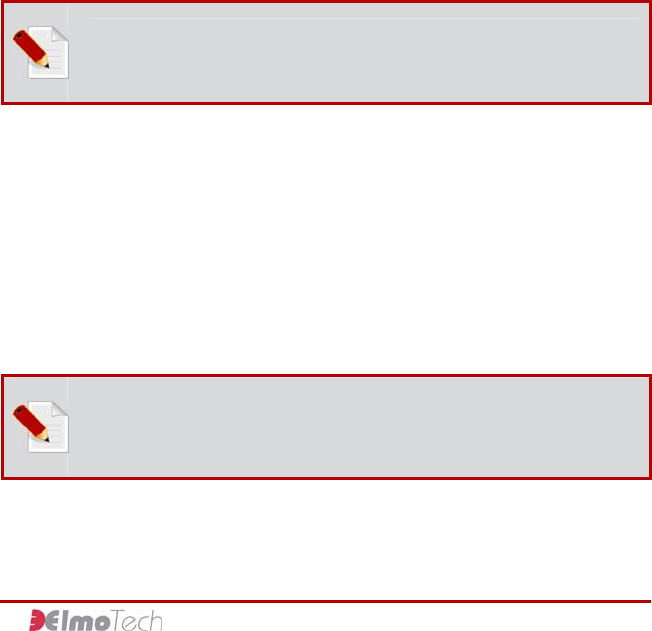
E3 Receiver Unit and Transmitter Installation Guide
The ideal location for the E3 Receiver Unit is in the center of the
house, 3 ft (1m) off the ground and at least 1 ft (30cm) away
from the wall. The E3 Receiver Unit should be located in an open
area away from other electrical appliances (e.g. personal
computers, laptops) or any metal objects.
Installing the E3 Receiver Unit
For the E3 Receiver Unit to receive and transmit signals with
maximum efficiency it should be mounted on a hard flat surface
with the antenna positioned upright. The E3 Receiver Unit
should also be mounted within easy reach of a power outlet.
Note: The distance between the wall and the E3 Receiver
Unit should be at least 1 ft (30cm).
To install the E3 Landline Receiver Unit (DCU-2010):
1. Disconnect the telephone cord from the wall telephone
socket and connect it into the Phone socket (right) located
on the back panel of the E3 Receiver Unit.
2. Connect one end of the supplied telephone cord into the Line
socket (left) located on the back panel of the E3 Receiver
Unit and plug the other end into the wall telephone socket.
3. Connect the adapter end of the supplied power adapter cord
into a power outlet.
Note: If any of the communication lines are incorrectly
connected, a 3-second audible beeping sound will be heard
from the E3 Receiver Unit.
6
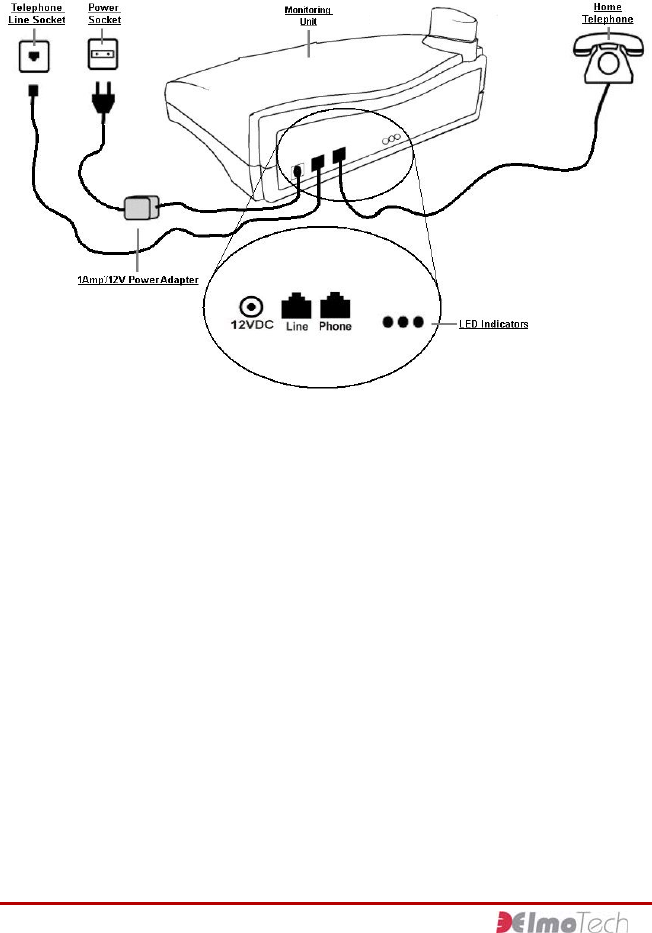
3 The Offender’s Curfew Location
Figure 2 E3 Receiver Unit Installation Diagram
4. Connect the other end of the supplied power adapter cord
into the power socket located on the back panel of the E3
Receiver Unit. The E3 Receiver Unit makes an audible
beeping sound and the left and right external LED’s, located
on the back panel, are turned on. This indicates that the E3
Receiver Unit is in a satisfactory working state.
The LED indicators are:
f Left - indicates that the external power is connected
f Right - indicates that the unit is connected to the telephone
line
The E3 Receiver Unit will automatically switch to standby mode.
7
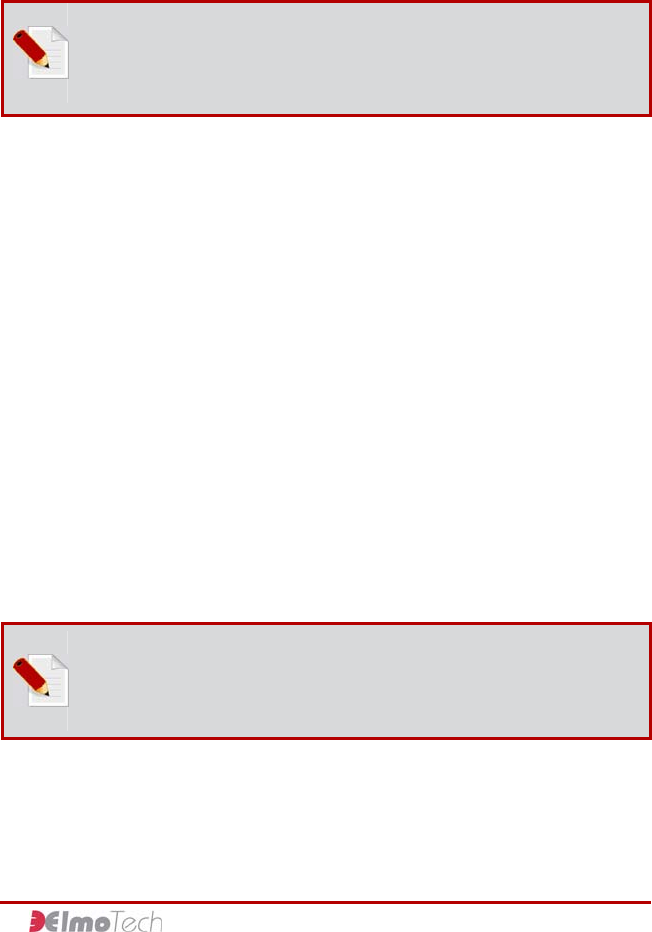
E3 Receiver Unit and Transmitter Installation Guide
8
Note: In standby mode the middle LED flashes and an
audible beeping sound is heard from the E3 Receiver Unit
every time the unit senses a Transmitter within its defined
reception range.
To install the E3 Cellular Receiver Unit (DCU-2010C):
1. Connect the adapter end of the supplied power adapter cord
into a power outlet.
2. Connect the other end of the supplied power adapter cord
into the power socket located on the back panel of the E3
Cellular Receiver Unit. The E3 Cellular Receiver Unit makes
an audible beeping sound and the left and right external
LED’s, located on the back panel, are turned on. This
indicates that the E3 Cellular Receiver Unit is in a
satisfactory working state.
The LED indicators are:
f Left - indicates that the external power is connected.
f Right - indicates that the unit has connected to the cellular
network (network connection may take up to a minute).
The E3 Cellular Receiver Unit will automatically switch to
standby mode.
Note: In standby mode the middle LED on the unit flashes
and an audible beeping sound is heard from the E3 Cellular
Receiver Unit every time the unit senses a Transmitter
within its defined reception range.

4 Installing the Transmitter
Once the E3 Receiver Unit has been connected and is working
correctly, you can calibrate and install the Transmitter (Tx).
Check that you have the following equipment items before you
install the Transmitter:
f Transmitter (Tx) and Strap holder
f Locking clips (male and female)
f Strap holder
f Electronic key
f Locking tool
f Screwdriver (to open the clips if necessary). It is
recommended to use a 5mm flat head screwdriver
Activating the Transmitter (Tx)
Before the Transmitter can be attached to the Offender, you
must first activate and calibrate the Transmitter.
To activate and calibrate the Transmitter:
1. Hold the Transmitter in your hand with the metal pins (along
the strap) pointing towards you. You will need to support the
underside of the strap.
2. Hold the electronic key in your other hand, with the ‘OFF’
button pointing towards the open or free end of the strap.
The ‘OFF’ button must be facing away from the Transmitter
body.
3. Press the electronic key down over the metal pins with the
two touch points on top of the electronic key matching the
metal pins on the Transmitter strap.
9
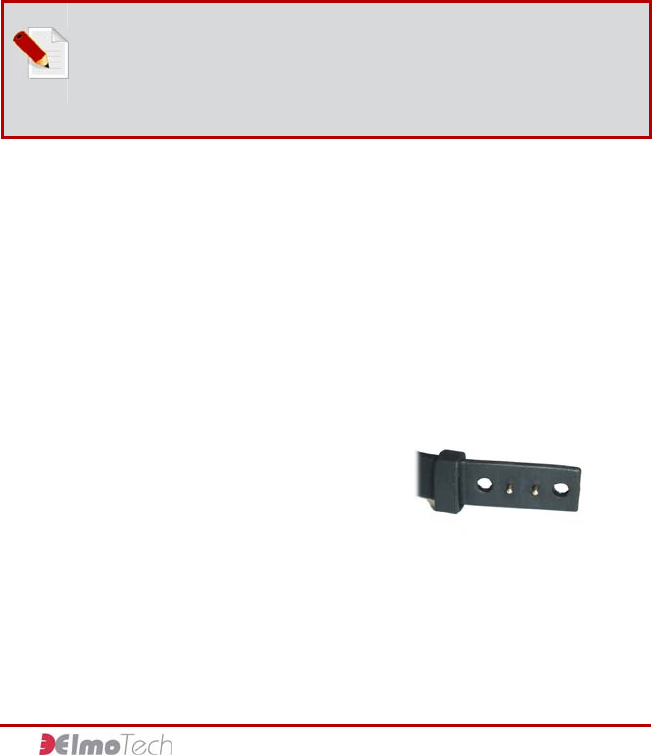
E3 Receiver Unit and Transmitter Installation Guide
4. Hold the electronic key and the Transmitter strap in this
position while you perform the next step.
5. Press the ‘ON’ on the electronic key for one second; the red
LED light on the electronic key turns steadily on for two
seconds. If the Transmitter successfully received the
activate/calibrate commands the red light on the electronic
key will flash for two seconds.
Note: If the Transmitter failed to receive the
activate/calibrate command, the red light on the electronic
key will turn off after the initial two seconds on. If the
electronic key’s battery is low, the red light will immediately
flash for two seconds once the ‘ON’ button is pressed.
6. Place the Transmitter on its side, on a non-metal table and
wait for about thirty seconds.
To deactivate the Transmitter, simply follow the instructions
from steps 1 to 6 above, but instead of pressing the ‘ON’ button
on the electronic key to activate/calibrate the Transmitter, press
the ‘OFF’ button.
Attaching the Transmitter
To attach the Transmitter to the offender:
1. Place a strap holder over the
short strap (strap with pin
side) of the Transmitter.
10
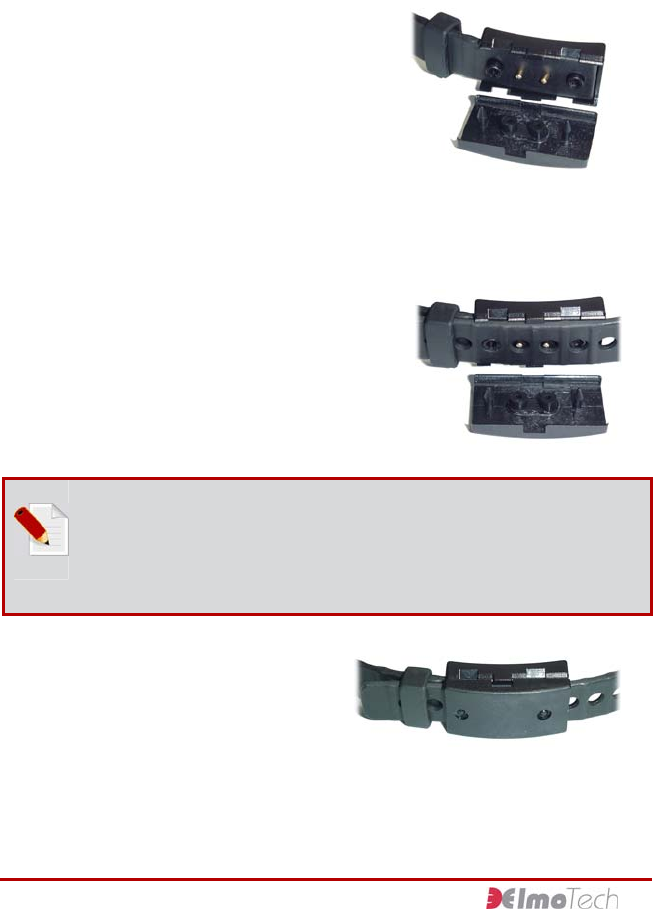
4 Installing the Transmitter
2. Attach the female Clip to the
underside of the
Transmitter’s short strap (to
lie against the Offenders
skin). Check that the closed
end of the clip fits with the
edge of the strap.
3. Wrap the Transmitter around the Offender’s wrist/ankle at its
narrowest point.
4. Lay the long strap over the
female clip ensuring that all
pins on the short strap are
protruding through the long
strap.
5. Slide the strap holder over
the end of the long strap in
order to hold it in place.
Note: The Transmitter must fit tightly around the
Offender’s wrist/ankle, but not squeezing. It is also
permissible to wear a sock underneath the ankle
Transmitter. Try to mount the Transmitter over the sock
before it is fastened.
6. Cover the female clip
with the male clip
ensuring that the pins
on the male clip fit
correctly into the
female clip (the
grooves on the side of
each clip must match).
11

E3 Receiver Unit and Transmitter Installation Guide
12
7. Ask the Offender to stand up and move around to ensure
that the Transmitter is comfortable.
8. Fasten the two clips using the specially designed locking
tool. An audible clicking sound should be heard, indicating
that the clips are closed properly.
Note: Once the Transmitter has been activated and
attached to the offender’s wrist or ankle and the relevant
offender is within the defined reception range of the E3
Receiver Unit, the E3 Receiver Unit locks onto and starts to
monitor the Transmitter.
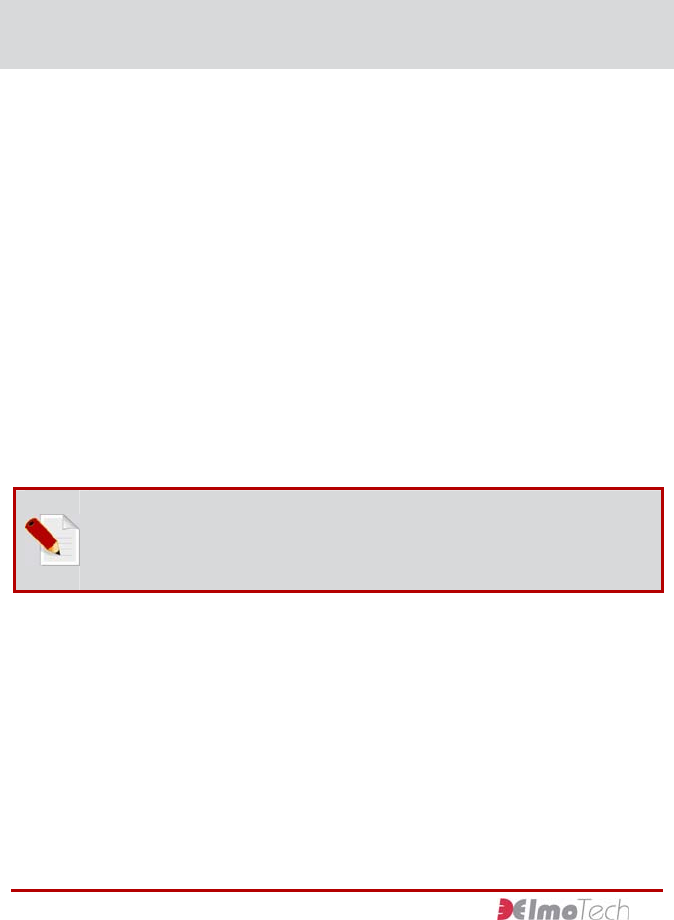
5 Activating the E3 Receiver Unit
In order to activate the E3 Receiver Unit, you will first need to
download the Offender’s curfew schedule and the E3 Receiver
Unit’s operational parameters.
Downloading Curfew Schedules and Operational
Parameters
Downloading the curfew schedule and general operational
parameters requires that the central monitoring server (CMS)
located at the monitoring center initiate a call to the E3 Receiver
Unit. Once the appropriate landline connection is made, the
download process can commence.
To initiate the download:
1. Verify that the right LED located on the back panel of the E3
Receiver Unit is constantly on and not flashing.
Note: If the right LED is flashing, it means that the line is
currently busy and you will have to wait until the line is
free.
2. Using a mobile phone, call the monitoring center and ask the
monitoring personnel to perform a manual download.
3. Monitor the download communication process directly from
the E3 Receiver unit (LED panel).
13

E3 Receiver Unit and Transmitter Installation Guide
The monitoring center personnel will call back to confirm a
successful download, or to inform you that the download failed
and must be initiated again. If the download was successful, the
following data will be downloaded:
f Transmitter serial number
f The offender’s curfew schedule
f Sanity call time intervals
f E3 Receiver Unit event configuration
f E3 Receiver Unit initial range setting
f Grace time and violation sensitivity settings
f E3 Receiver Unit operational parameters
After the download process has been confirmed as successful,
the E3 Receiver Unit will automatically switch to monitoring
mode.
Note: Monitoring mode will only start if the Offender’s
defined program start time, as defined in the Electronic
Monitoring System software application, has arrived.
Performing a Range Test
A range test is performed in order to define the appropriate
reception range between the Transmitter and the E3 Receiver
Unit. The range test is designed in order to create a limited free
movement area. The Offender will use this limited free
movement area while he/she is inside his/her home monitoring
environment.
To perform range test:
1. Estimate the size of the Offenders premises and decide on
the initial range setting for the E3 Receiver Unit (e.g.
medium).
14

5 Activating the E3 Receiver Unit
2. Verify that the telephone line LED (right) located on the
back panel of the E3 Receiver Unit is constantly on and not
flashing.
3. Using a mobile phone, call the monitoring center and ask the
monitoring personnel, first, to adjust the range settings in
the monitoring center software application to the range
setting that you noted during your estimation, and then to
perform a range test (start range).
Once the range test has been activated, the following occurs:
f The Offender’s telephone rings 2-3 times and then stops.
f The telephone line LED (right) located on the back panel on
the E3 Receiver Unit flashes and then returns to its steady
state.
f The Transmitter reception LED (middle) blinks 3 times in
quick succession accompanied by 3 audible beeping sounds.
This indicates that the E3 Receiver Unit is in range test
mode and the range test has started.
Note: The E3 Receiver Unit will be in range test mode for
approximately 15 minutes, unless the monitoring center
personnel terminate the range test manually.
4. Escort the Offender to the following locations in his/her
home monitoring environment:
f Locations that are the most distant from the E3 Receiver
Unit
f Locations behind large metal objects
f Location where the Offender spends long periods of time
(bedroom. toilet, living room, etc.)
f Remote location where the Offender is allowed to be
while in his/her home monitoring environment (garage,
cellar, yard, garden, etc.)
15

E3 Receiver Unit and Transmitter Installation Guide
16
f Any location that your experience and common sense
suggests to be a viable location for range testing
5. An assistant should stand next to the E3 Receiver Unit and
observe the Transmitter reception LCD (middle). Every time
the E3 Receiver Unit receives a transmission signal from the
Offender’s Transmitter (approx. every 20 seconds) the
Transmitter reception LCD (middle) flashes 3 times in quick
succession.
6. Wait at least two minutes in each range testing location.
Note: During these two minutes, four transmissions should
be received from the Transmitter.
If four or more transmissions are received from the
Transmitter before the two minutes have elapsed, you can
move onto the next location.
If less than four transmissions are received, call the monitor
center personnel and request a change in the range setting,
preferably to a longer range.
If the range setting is already set at its maximum range and
you still don’t receive four transmissions in a two-minute
time period, you will need to relocate the E3 Receiver Unit
and restart the range test.
7. After satisfactory testing of all relevant locations, call the
monitoring center and ask the monitoring personnel to
manually stop the range test (end range).
8. Upon ending the range test the E3 Receiver Unit makes an
audible beeping sound to indicate the range test completion.

6 Daily Operating Instructions
If using the E3 Landline Receiver Unit, the Electronic Monitoring
System is generally transparent to the user of the telephone.
The E3 Receiver Unit while connected to the telephone is
capable of accepting incoming calls and performing outgoing
calls.
The E3 Cellular Receiver Unit is capable of accepting calls from
the Monitoring Center and allows the Offender to perform
predefined outgoing calls to the Monitoring Center or emergency
services.
Incoming Calls (E3 Landline Receiver Unit)
The E3 Receiver unit may receive two types of incoming calls;
regular calls from friends or family and the occasional call from
the monitoring center computer. All incoming calls trigger a pre-
defined number of rings (depending on the defined default
setting – 6 rings) before the E3 Receiver Unit picks up the call.
Accepting an Incoming Call
When accepting an incoming call the following should be noted:
f The phone will ring up to six times, during which the call
may be answered by the Offender. After six rings have
expired, the E3 Receiver Unit will automatically answer, and
then disconnect the call
f If the Offender, after answering the call, hears a light
audible sound on the line during the first few seconds of the
conversation, he / she should not be alarmed. The E3
Receiver Unit automatically interacts with each incoming call
for the first few seconds
17

E3 Receiver Unit and Transmitter Installation Guide
f During the conversation, the Offender may hear a short
audible tune coming from the E3 Receiver Unit. This tune
indicates that the E3 Receiver Unit needs to call the
monitoring center computer. The Offender should complete
his / her conversation as soon as possible to enable the E3
Receiver Unit to make its call. Failure to give up the line
could result in a violation.
Outgoing Calls (E3 Landline Receiver Unit)
The E3 Receiver unit can perform two types of outgoing calls;
regular calls to friends or family and the occasional call, initiated
by the E3 Receiver Unit, to the monitoring center computer,
either to report a violation, or to report its current status.
Performing an Outgoing Call
When performing an outgoing call the following should be
noted:
f If the Offender tries to perform an outgoing call and hears a
sharp modem sound, the call attempt must be terminated.
This indicates that the E3 Receiver Unit needs to call the
monitoring center computer. Failure to give up the line could
result in a violation
f During the conversation, the Offender may hear a short
audible tune coming from the E3 Receiver Unit. This tune
indicates that the E3 Receiver Unit needs to call the
monitoring center computer. The Offender should complete
his / her conversation as soon as possible to enable the E3
Receiver Unit to make its call. Failure to give up the line
could result in a violation.
18
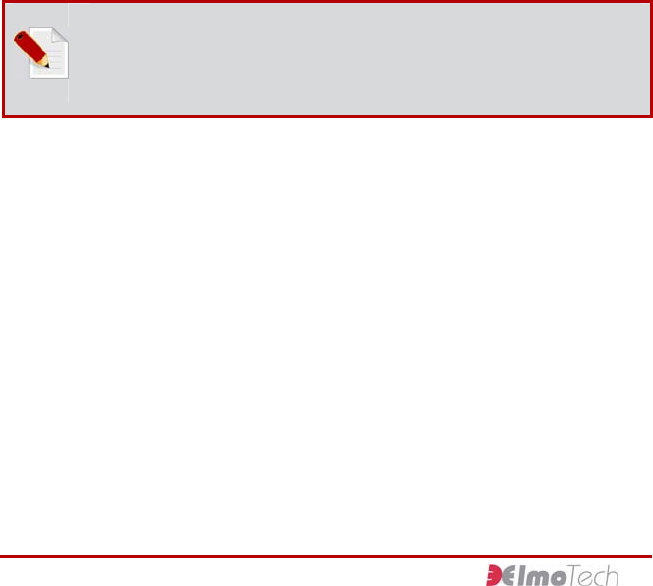
6 Daily Operating Instructions
Incoming Calls (E3 Cellular Receiver Unit)
The E3 Cellular Receiver unit may receive two types of incoming
calls; test request calls from the voice verification engine (for
voice verification programs) and the occasional call from the
monitoring center computer.
Accepting an Incoming Call
To accept an incoming call:
When the E3 Cellular Receiver unit rings, lift the phone and
press the Answer button.
Note: The phone will ring up to six times, during which the
call may be answered by the Offender. After six rings have
expired, the E3 Cellular Receiver Unit will automatically
answer, and then disconnect the call.
To terminate a call:
Press the End button.
Outgoing Calls (E3 Cellular Receiver Unit)
The Offender may perform two types of outgoing calls; test
request calls to the voice verification engine (for voice
verification programs) and emergency calls to the monitor
center or emergency services. The phone numbers of these
destinations are downloaded to the E3 Cellular Receiver.
19

E3 Receiver Unit and Transmitter Installation Guide
Performing an Outgoing Call
To place an outgoing call:
Lift the phone on the E3 Cellular Receiver and press one of the
following buttons:
f Call – for the monitoring center as well as the voice
verification engine (for voice verification program).
f Emergency – for the emergency services (e.g. 911 in the
USA), or the monitoring center (for voice verification
program).
Note: Once you press the desired button a short audible
beeping sound is heard. A lower tone beeping sound can be
heard when the E3 Cellular Receiver unit fails to perform
the outgoing call.
To end a call:
Press the End Button and place the phone in its cradle.
20

6 Daily Operating Instructions
General Rules for the Offender
The following points describe the rules for the Offender
regarding the Electronic Monitoring System.
Warning! Never…
f Touch or move the E3 Receiver Unit once it has been
installed
f Place any objects on top of the E3 Receiver Unit
f Disconnect the power cord from either the E3 Receiver
Unit
f Attempt to open the E3 Receiver Unit
f Move out of the designated curfew area during an in-
house curfew time frame
f Attempt to open the Transmitter strap
f Cut or break the Transmitter strap or clip
The following appliances are prohibited (E3 Landline
Receiver Units only):
f Answering Machine
f Fax Machine
f Fax / Modem
f ADSL Internet Service
f Special services supplied by the telephone company e.g. call
forwarding or call waiting
21

7 Removing the Monitoring System
In some cases it is required to remove the monitoring system
before the defined confinement period is completed. Before
disconnecting and removing the E3 Receiver Unit, an end of
service procedure should be performed.
Note: Performing an end of service before disconnecting
and removing the E3 Receiver Unit is essential to preserving
the unit’s internal backup battery.
Performing an End of Service
To perform an end of service:
1. Using a mobile phone, call the monitoring center and ask the
monitoring personnel to perform a manual end of service.
2. The monitoring center personnel will call back to confirm a
successful end of service. You can now disconnect and pack
the E3 Receiver Unit into its original package.
Note: It is recommended that only experienced personnel
remove the E3 Receiver Unit.
23

E3 Receiver Unit and Transmitter Installation Guide
Disconnecting and Packing the E3 Receiver Unit
To disconnect and pack the E3 Receiver Unit:
1. Remove the power adapter from the wall.
2. For E3 Landline receiver units, remove all telephone cables
from the back of the unit and reconnect the telephone line
to the wall socket.
3. Pack the E3 Receiver Unit into its original package and place
into the carrying case.
4. Pack the power-cord adapter and telephone cables into their
original packaging and place into the carrying case. You can
now remove and pack the Transmitter.
Note: It is recommended that only experienced personnel
remove the Transmitter.
Removing the Transmitter
To remove the Transmitter:
1. Check the following signs to see if the clips have been
tampered with:
f Cracks on the clips
f Broken pins
f Sign of adhesive or glue
2. Being careful not to damage or cut the strap, use a
screwdriver to break the disposable clips.
24
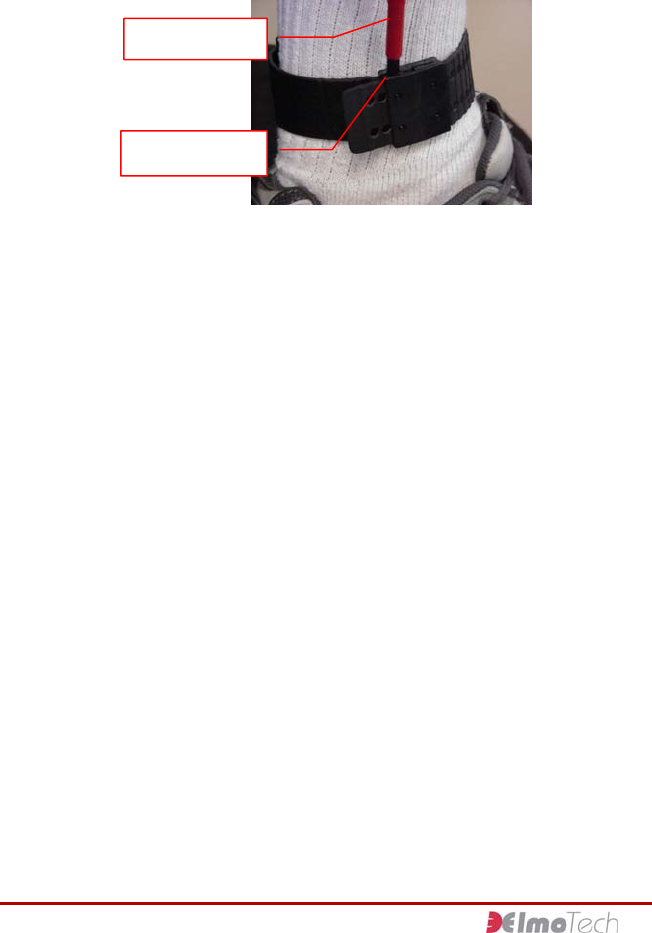
7 Removing the Monitoring System
Screwdriver
Grooves
Figure 3 Removing the Transmitter
3. Collect all the fragments of the broken clip. Do not leave any
disposable items.
Deactivating the Transmitter
Deactivating the Transmitter is essential to preserving the unit’s
internal battery.
To deactivate (turn off) the Transmitter:
1. Hold the Transmitter in your hand with the metal pins (along
the strap) pointing towards you. You will need to support the
underside of the strap.
2. Hold the electronic key in your other hand, with the ‘OFF’
button pointing towards the open or free end of the strap.
The ‘OFF’ button must be facing away from the Transmitter
body.
3. Press the electronic key down over the metal pins with the
two touch points on top of the electronic key matching the
metal pins on the Transmitter strap.
4. Hold the electronic key and the Transmitter strap in this
position while you perform the next step.
5. Press the ‘OFF’ on the electronic key for one second; the red
LED light on the electronic key turns steadily on for two
seconds. If the Transmitter successfully received the
25

E3 Receiver Unit and Transmitter Installation Guide
26
deactivate command the red light on the electronic key will
flash for two seconds.
Note: If the Transmitter failed to receive the deactivate
command, the red light on the electronic key will turn off
after the initial two seconds on. If the electronic key’s
battery is low, the red light will immediately flash for two
seconds once the ‘ON’ button is pressed.
6. Pack the Transmitter into its original packaging and place
into the carrying case.
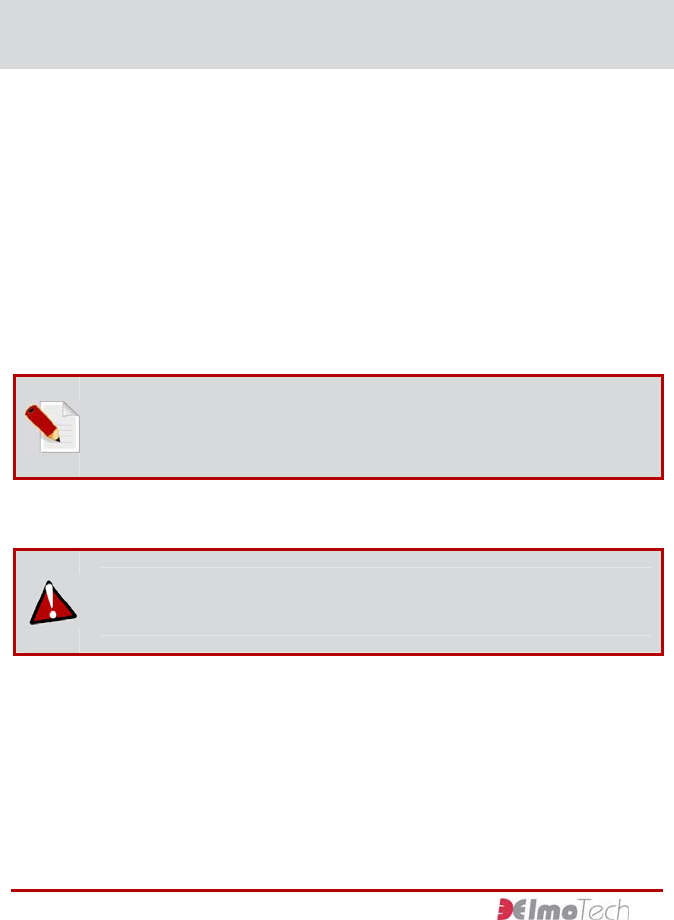
8 Monitoring System Maintenance
In order to keep the Electronic Monitoring System functional and
in good working order a number of maintenance procedures will
need to be adhered to.
Cleaning the E3 Receiver Unit
To clean the E3 Receiver unit:
1. Remove the E3 Receiver unit from its carrying case.
2. Spray the surface of the E3 Receiver unit with an alcohol
based cleaner (optional).
Note: Elmo-Tech recommends Citrus Base cleaner by 3M™
(http://solutions.3m.com/).
3. Using a damp cloth, wipe the outside of the E3 Receiver
unit.
Caution! Do not submerge the E3 Receiver unit, or put it
under running water.
4. Using a dry cloth, or paper towel, dry the outside of the E3
Receiver unit.
5. Once the E3 Receiver unit is dry, return it to its carrying
case.
27

E3 Receiver Unit and Transmitter Installation Guide
Cleaning the Transmitter
The Transmitter is made of a single mold, especially designed to
protect the integrity of the electronic circuits during daily use
and while it is being cleaned.
The following cleaning methods are approved by Elmo-Tech:
f Manual Cleaning – using a soft brush and approved cleaning
product.
f Using a Dishwasher – together with an approved cleaning
product.
To clean the Transmitter manually:
1. Remove the Transmitter from its carrying case.
2. If there are clips on the Transmitter, remove the ‘female’
and ‘male’ parts before cleaning.
3. Remove the strap holder from the Transmitter.
4. Hold the Transmitter by the end of the long strap and either:
f Spray the Transmitter with 3MTM Citrus Base cleaner, or
an alcohol based equivalent.
Or
f Using a damp cloth or towel, clean the Transmitter with
soapy water.
5. Using a dry cloth or towel, dry the outside of the Transmitter
and place it on a towel with its inner side facing up.
6. Using a soft brush, gently brush the inner side of the
Transmitter along the tracks.
7. After cleaning, wash the Transmitter in clean water.
8. Using a dry cloth or towel, dry the Transmitter thoroughly.
9. Place the strap holder back onto the short strap of the
Transmitter.
28

8 Monitoring System Maintenance
10. Place the Transmitter back into its carrying case.
To clean the Transmitter using a dishwasher:
1. Remove the Transmitter from its carrying case.
2. If there are clips on the Transmitter, remove the ‘female’
and ‘male’ parts before cleaning.
3. Remove the strap holder from the Transmitter.
4. Place the Transmitter into the dishwasher machine.
5. Use a pH neutral or slightly acidic cleaning agent.
Note: Elmo-Tech recommends Hepi dishwashing Products
by Thurn-produckte (http://www.thurn-produkte.de/).
6. Choose the shortest cycle, at a maximum temperature of
52ºC.
7. Once the Transmitter is dry, place the strap holder back
onto the short strap of the Transmitter.
8. Place the Transmitter back into its carrying case.
Replacing the Transmitter Straps
After some time and depending on the wear and tear of the
Transmitter, the straps on the Transmitter will need to be
replaced. Any of the following points could justify replacing a
Transmitter strap:
f Visible damage to one or both straps
f Strap tamper alarm generated, with no visible damage to
the Transmitter
f Transmitter will not calibrate
29

E3 Receiver Unit and Transmitter Installation Guide
Note: If only one side of the strap is damaged, you may
want to leave the undamaged side in place and replace only
the damaged side of the strap.
Check that you have the following equipment items before you
replace the Transmitter straps:
f 1 Transmitter body
f 1 pair of replacement straps (long/medium non-pins side
and long/medium pins side)
f Screwdriver
f Extra screws
f Extra strap clips (male and female)
f Electronic key
To replacing the Transmitter straps:
1. Using the screwdriver, open the screw(s) that holds the
strap clasp to the Transmitter and remove the strap clasp.
2. Gently shake the strap loose from the Transmitter body,
being extra careful not to damage the metal pins on the
Transmitter body.
3. Position the new strap over the Transmitter body. Notice
that the two small holes on the strap have to lie exactly over
the two metal pins.
4. Gently place the strap down over the metal pins and press
down along the seam of the strap, snugly fitting the entire
strap to the Transmitter body.
5. Put the strap clasp back in place with the wider side pointing
in-wards.
6. Close the screw (s) with the screwdriver. It has to be closed
firmly, but not too tight since this can damage the strap.
30

8 Monitoring System Maintenance
7. Test the new strap by performing a calibration. Refer to the
chapter about Installing the Transmitter.
Note: If, after the calibration, the Transmitter does not
reset, repeat steps 1-6 making sure that the strap is
positioned correctly over the pins. Then perform another
calibration test. If changing only one side of the strap does
not work, you should try and change the other strap side.
31

9 System Specifications
This chapter lists the specifications details for each equipment
item associated with the Electronic Monitoring System.
Transmitter Specifications
f Transmitter size:
5.5 x 4.2 x 1.5 cm
(2.2 x 1.65 x 0.67 in)
f Transmitter weight:
50 g (1.75 oz)
f Fully adjustable / reusable
straps f Disposable locking clip
f Shock resistant f Multi tamper protection
f Battery operational life:
18 / 36 months f Battery shelf life: 2-3 years
f Waterproof to 4.5 m (15 ft)
E3 Receiver Unit Mechanical/Electrical Characteristics
f E3 Receiver Unit size:
25.5 x 19.5 x 7 cm
(10 x 7.4 x 2.6 in)
f Antenna cover height:
3 cm (1.2 in)
f Weight (without power
adapter):
1 kg (2.20 lb)
f Internal backup battery
life: over 48 hours
f Case tamper and Tilt detection f Water Resistant
f Power disconnect detection f Operating Temperature:
5 o C to 55o C
f Humidity: 0 to 93% f Shock: 1.5 m (4.9 ft) fall
without separation
f Power Input: 12VDC, 1A (DCU-
2010) or 2A (DCU-2010C) f
33

E3 Receiver Unit and Transmitter Installation Guide
10 FCC Information
DCU-2010 FCC ID: LSQ-DCU-2010-2
DCU-2010C FCC ID: LSQ-DCU-2010C-2
FEDERAL COMMUNICATIONS COMMISSION (FCC) Part 15 STATEMENT
This equipment has been tested to FCC requirements and has been found acceptable for
use. The FCC requires the following statement for your information.
This equipment generates and uses radio frequency energy and if not installed and used
properly, that is, in strict accordance with the manufacturer’s instructions, may cause
interference to radio and television reception. It has been type tested and found to comply
with the limits for a Class B computing device in accordance with the specifications in Part
15 of FCC Rules, which are designed to provide reasonable protection against such
interference in a residential installation. However, there is no guarantee that interference
will not occur in a particular installation. If this equipment does cause interference to radio
or television reception, which can be determined by turning the equipment off and on, the
user is encouraged to try to correct the interference by one or more of the following
measures:
• If using an indoor antenna, have a quality outdoor antenna installed.
• Reorient the receiving antenna until interference is reduced or eliminated.
• Move the receiver away from the control/communicator.
• Move the antenna leads away from any wire runs to the control/ communicator.
• Plug the control/communicator into a different outlet so that it and the receiver
are on different branch circuits.
If necessary, the user should consult the dealer or an experienced radio/television
technician for additional suggestions.
The user or installer may find the following booklet prepared by the Federal
Communications Commission helpful: “Interference Handbook”. This booklet is available
from the U.S. Government Printing Office, Washington, DC 20402.
The user shall not make any changes or modifications to the equipment unless authorized
by the Installation Instructions or User’s Manual. Unauthorized changes or modifications
could void the user’s authority to operate the equipment.
FEDERAL COMMUNICATIONS COMMISSION (FCC) Part 68 NOTICE
This equipment complies with Part 68 of the FCC rules. On the bottom cover of this
equipment is a label that contains, among other information, the FCC registration number
and the ringer equivalence number (REN is 1.0 B) for this equipment. If requested, this
information must be provided to the telephone company.
This equipment uses the following jacks:
An RJ31X is used to connect this equipment to the telephone network.
34

10 FCC Information
35
The REN is used to determine the quantity of devices which may be connected to the
telephone line. Excessive RENs on the telephone line may result in the devices not ringing
in response to an incoming call. In most, but not all areas, the sum of the RENs should not
exceed five (5.0). To be certain of the number of devices that may be connected to the
line, as determined by the total RENs, contact the telephone company to determine the
maximum REN for the calling area.
If this equipment causes harm to the telephone network, the telephone company will
notify you in advance that temporary discontinuance of service may be required. If
advance notice is not practical, the telephone company will notify the customer as soon as
possible. Also, you will be advised of your right to file a complaint with the FCC if you
believe necessary.
The telephone company may make changes in its facilities, equipment, operations, or
procedures that could affect the operation of the equipment. If this happens, the telephone
company will provide advance notice in order for you to make the necessary modifications
in order to maintain uninterrupted service.
If trouble is experienced with this equipment, please contact the manufacturer for repair
and warranty information. If the trouble is causing harm to the telephone network, the
telephone company may request you remove the equipment from the network until the
problem is resolved.
There are no user serviceable components in this product, and all necessary repairs must
be made by the manufacturer. Other repair methods may invalidate the FCC registration
on this product.
This equipment cannot be used on telephone company-provided coin service. Connection
to Party Line Service is subject to state tariffs.
TRANSMITTER FEDERAL COMMUNICATIONS COMMISSION (FCC)
Part 15 STATEMENT
The equipment complies with Part 15 of the FCC Rules.
Operation is subject to the following two conditions:
(1) This device may not cause harmful interference, and (2) This device must accept any
interference received, including interference that may cause undesired operation.
This equipment has been tested and found to comply with the limits for a Class B digital
device, pursuant to part 15 of the FCC Rules. These limits are designed to provide
reasonable protection against harmful interference in a residential installation. This
equipment generates, uses and can radiate radio frequency energy and, if not installed
and used in accordance with the instructions, may cause harmful interference to radio
communications. However, there is no guarantee that interference will not occur in a
particular installation. If this equipment does cause harmful interference to radio or
television reception, which can be determined by turning the equipment off and on, the
user is encouraged to try to correct the interference by one or more of the following
measures:
1. Reorient or relocate the receiving antenna, 2. Increase the separation between the
equipment and the receiver, 3. Connect the equipment into an outlet on a circuit different
from that to which the receiver is connected, 4. Consult the dealer or an experienced
radio/TV technician for help.
